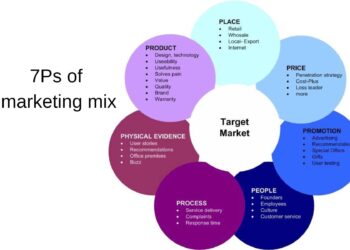The buying process passes through six stages; Need recognition, Information search, Evaluation of alternatives, Purchase decision, Purchase and Post-purchase behavior.
Many traditional sellers/retailers still think that the customer purchases the product or service randomly but the fact is, any purchasing decision by the buyer happens through different stages of the process as mentioned above.
Have you thought any day, What makes the buyer purchasing the product/service? What factors does he consider before making his decision? From where does he collect information? How does the seller make the buyer purchase the same product/service again and again? Don’t worry we will try to answer all.
Here are the main 5 Stages of the Buying Decision Process explained in detail.
5 Stages of Buying Decision Process
1. Need Recognition
As we know, according to Maslow’s hierarchy of needs every Individual will have different types of needs at a different stage.
What makes the buyer purchasing the product/service?
The need is triggered either by internal stimuli (for example, a person feels hungry) or external stimuli (for example, advertisements like BigBillion day offers).
Here the buying process starts with identifying his need or a problem based on the situation he faces and it also plays a vital role in preparing a marketing strategy for a seller/marketer to identify the category of consumers to target their product or service.
For example, Horlicks targeted students by saying drink Horlicks to become more taller, sharper, and stronger.
2. Information Search
Once a customer/consumer identifies the need he starts collecting information to find a solution, the search can take seconds, days, or more time, it depends on the primary information he has, the surrounding he lives in and the technology he is aware of.
From where does he collect information?
The customer collects the information through different sources such as mouth to mouth, billboards, banners, advertisements in television, radio, social media, internet, etc.
All the platforms where the customer gets the information is the golden place for a marketer to create an opportunity to pitch his product or service by promoting and converting him for a sale.
3. Evaluation of Alternatives
This stage is crucial because in a bunch of alternatives considering your product/service as the best is a difficult task. A marketer should think about what USP you can provide compared to others and highlight it as a marketing strategy.
What factors does he consider before making his decision?
Any buyer evaluates the product and services with the available alternatives, there are several factors he considers like brand, features, cost, benefits, and trust-worthiness are compared.
Many times even though a particular brand performs best, the consumer opt for the product/service which he has used before.
4. Purchase Decision
This is the stage where the buyer intends to purchase the specific product/service after evaluating the alternatives and considering the factors including his income level, benefits, discounts, and offers.
But there will be high chances that at the last moment also the consumer can change his mind and opt for different products/services.
At this point, the marketer has to remind the customers about their product or service again and again by retargeting the same customer through various methods and it is easy to target the customer online compared to offline through SMS, email, Social media, etc… where ever he is active.
Other factors also include such as steps to purchase online, available payment options, and the website looks trustworthy or fishy.
Many times people buy the products without having the need only because of the marketing strategies implemented by the seller.
Also read: Best Steel Manufacturing Companies In India
5. Post Purchase Behaviour
After the purchase made by the consumer, he or she get satisfied or dissatisfied, the information has to be collected by the marketer through feedback and improve the product or service as per the consumer expectations.
In this stage, the consumer comes to the conclusion of whether he made the right decision or not.
How does the seller make the buyer purchase the same product/service again and again?
By meeting the consumer expectations and giving after-sales service, or keeping in touch with the consumer by giving tips and educate him, the seller can sell his products or services again and again.












